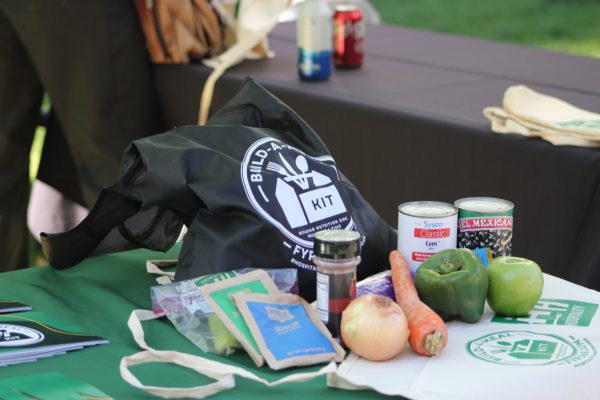Recycled spring fashions: Buy-sell-trade clothing stores are sources for trendy outfits
April 4, 2012
Warmer days and blooming flowers have announced the arrival of spring, and with the new season comes the allure of new spring fashions. The desire to supplement an already full wardrobe can lead many shoppers to stretch both credit cards and closets to capacity.
Rather than donating unwanted-yet-still-fashionable clothing items to charity – or worse, allowing them to take up valuable closet space – selling items to a buy-sell-trade store can be a lucrative way to discard the old and get something new.
But for those who have never delved into the racks at a buy-sell-trade store, it can be difficult to know where to begin. Even seasoned secondhand shoppers can be intimidated when it comes to selling their items. With a few tips and a bit of preparation, unwanted clothing can be turned into cash or even an entirely new wardrobe.
Typically, buy-sell-trade stores operate on a percentage system. Once items have been selected, buyers will price the item based on the condition, original selling price and how in-demand the item might be in that store. Sellers are then given 35 percent of the selling price in cash or 50 percent in store trade. Trade operates as store credit and can be used at any time, not just on the day it is received.
In the Sacramento area, Crossroads Trading Co. and Freestyle Clothing Exchange buy seven days a week and carry both men’s and women’s apparel and accessories. Most buy-sell-trade stores buy only for the current season but a quick phone call or visit to the store’s website can provide more information on what types of items buyers are looking to purchase for the store.
While both stores have the same buying format, some individuals have personal preferences when looking to sell their clothes.
“Freestyle over Crossroads,” said Brandon Duvall, a frequent Freestyle shopper and seller. “Whenever I sell they always take more of my stuff and I get more money.”
Next comes the trickier part: deciding what to try and sell. When sifting through items, buyers look for current styles in excellent condition. Style decisions are made by the individual buyer and are dependent on what sells best in that particular store. However, quality checks prior to selling should be the seller’s responsibility.
These not only save both the seller and buyer time at the buying counter, but they can also keep disappointment from occurring when items are passed over due solely to poor condition.
Check that each item is freshly laundered and free of any stains, holes, tears or missing buttons. If the problem can be remedied, take the time to make the repair, but anything that has been well-worn should be donated instead.
Roseann Bath, assistant manager and senior buyer for the Market Street Crossroads Trading Co. in San Francisco, said she feels condition is the most important thing for novice sellers to consider when selling.
“I wish (sellers) would go through their items and edit more for condition,” Bath said. “It makes people get in and out faster.”
After checking for quality, do one last style check. Sellers should ask themselves why they are selling the item. If selling a dress because they have had it for eight years and would not be caught dead wearing it, then chances are the buyers would not be interested in it either. Try to give items a critical once-over and stick to selling current styles that would be seen in a magazine or storefront.
An easy way to determine if an item is current is to check the brand’s website. If the garments listed there are the complete opposite of the items to be sold, it is a good bet the items would not sell.
Finally, try not to let personal feelings discourage the process. Buyers who pass on items are not trying to offend the seller’s personal style – they are simply trying to fill their stores with product that will be profitable.
Asking questions can help keep disappointment from occurring as well. It will help the seller become more familiar with the buying process while preparing him or her for the next time they sell.
With these tips and tricks in mind, shoppers and sellers can easily spring for a spring style reinvention.
Jessica Scharff can be reached at [email protected]








































































































































